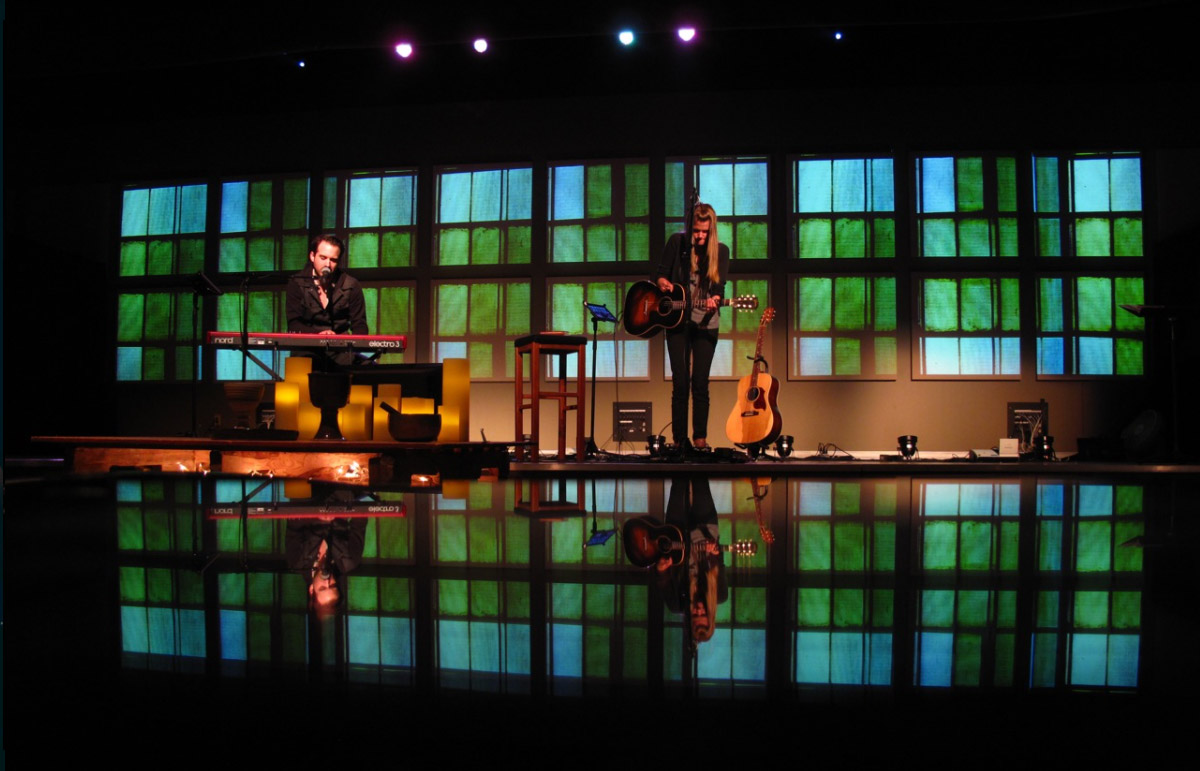While the country’s politically conservative congregations far outnumber other faith communities, left-leaning houses of worship are on the rise in the U.S., according to a recently published National Congregations Study. If tax laws permitted, liberal congregations would be more likely to publicly endorse or oppose a political candidate than those who identify as conservative or middle-of-the-road, the study found.
More than half of congregations (57%) reported engaging in at least one of 12 political activities surveyed in the study, including organizing get-out-the-vote efforts, distributing voter guides, and marching or demonstrating. Those who march are most likely to do so concerning poverty and economic inequality or in support of immigrants, the data suggests.

Those are just a few of the revelations contained in the fourth and latest round of the NCS, which gathered information on everything from size and political identity to worship practices and social services efforts among 1,262 U.S. congregations between July 2018 and September 2019. Taken alone, the study offers an interesting snapshot of congregational life just prior to the COVID-19 pandemic. But it’s the long-term trends, captured over the last 20 years, that most interest Mark Chaves, who directed similar studies in 1998, 2006-07 and 2012.
“Everybody knows about their own congregation, but they don’t know how they compare or how they fall in the national pattern,” said Chaves, the Anne Firor Scott Distinguished Professor of Sociology and a professor of religious studies and divinity at Duke University. “Are they bucking trends? Are they part of the trends? People like to know what’s going on in the bigger picture.”
Taken together, the four studies, made possible by major grants from Lilly Endowment Inc., aggregate the practices of 4,496 unique congregations representing a range of Christian denominations, as well as Jewish, Muslim, Hindu and Buddhist communities. Many of the questions are repeated from survey to survey, to allow for long-term tracking, but each wave also includes a few new inquiries related to topics “in the air at the moment,” Chaves said.
Policies that matter
For instance, nearly 39% of congregations that reported participating in lobbying efforts or marches in 2018-19 said they did so in behalf of immigration policy — triple the percentage reported in 2012.
Amid widespread media coverage of the Trump administration’s stepped-up deportation efforts, the most recent NCS also asked congregations whether they’d discussed declaring themselves sanctuaries for undocumented immigrants. While 13% of congregations reported considering it, only 4% ultimately declared themselves sanctuaries — though that figure was considerably higher among Catholic churches, where nearly one-third reported taking that step.
On the campaign trail in 2015, Donald Trump took aim at the Johnson Amendment, a portion of the tax code that prohibits churches and other nonprofit organizations from endorsing or opposing candidates for elected office, lest they risk their tax-exempt status. Though that’s still the law of the land, despite a 2017 Trump executive order, 4% of respondents to the most recent NCS survey acknowledged endorsing or opposing political candidates — a number the study notes is probably understated, given the potential consequences.
But how many congregations would openly take that step if the tax code didn’t prohibit it? Seizing on the moment, the NCS added that query to its latest survey, with fascinating results, Chaves said. Of congregations that hadn’t already endorsed a candidate, 17% said they would if the laws were changed, but most of that interest came from the left side of the aisle.
Does your congregation engage in any political activity? Why? How does your congregation’s theology relate to its political activity?

Though political conservatives have tended to be the loudest advocates for changes in the tax code, only 11% of right-leaning congregations and 15% of centrist congregations said they would support or oppose a candidate if doing so wouldn’t jeopardize their tax-exempt status, compared with 45% of liberal congregations.
“Even though when this is in the news the advocacy is always from the right, the irony is if the tax laws around this actually got changed, it would unleash a lot of effort on the left,” Chaves said.
Most American congregations, 46%, still identify as politically conservative, but that’s down from 62% in 1998. While only 15% of the newest study’s participants declared themselves politically liberal, that’s basically doubled since the original study 20 years ago.

Among Christian churches, predominantly Black congregations were far more inclined to enter the political endorsement sphere, with 13% reporting they’d already done it — compared with no more than 4% within any other Christian group — and another 28% saying they would if they could, with only 15% or fewer of white evangelical, Catholic and white mainline Protestant churches saying they’d take that step.
Gospel perspective
The Rev. William Lamar IV, the senior pastor at Metropolitan AME Church in Washington, D.C., said he suspects that those numbers represent the response of Black congregations to the resurgence of racist ideals cloaked in public policy.
What are the challenges facing your community? In which challenges does your congregation engage? What does that engagement look like?

Lamar said he personally does not favor faith communities’ endorsing or opposing individual candidates. He described the Johnson Amendment as “a creaky dam holding back the waters of oppression.” If that dam breaks, Lamar predicted, political conservatives — given their numbers — have a greater ability to mobilize and raise funds than politically liberal congregations do. He said he worries that they also have a greater willingness to foment violence in behalf of their cause.
But congregations do have an obligation to speak out on issues that affect their communities, Lamar said. For Black congregations, those issues include living wages, affordable housing and health care, voting rights, and police violence against civilians, which politicians on both sides of the aisle have failed to address adequately, he said.
“You don’t find in either political party a true commitment to those. Party politics on the left and the right sacrifice justice when politically expedient,” Lamar said. “We are derelict if we don’t speak about the issues from a gospel perspective. And if we are faithful to our tradition, neither party would be comfortable with our policies.”
Less-formal worship
Collective worship remains the primary activity within faith communities, with virtually all Christian congregations and many non-Christian congregations typically including a sermon and singing in their services. But “one of the most fascinating and important changes” identified in the study is that worship services have become less formal and more expressive. Since 1998, significantly fewer congregations use a written order of service, play an organ or incorporate choral singing in worship, according to the study.
Drum playing, however, has more than doubled during that period, and 28% of congregations in the latest NCS reported worshippers jumping, shouting or dancing spontaneously, up from about 19% in the survey 20 years earlier. The study suggests that the changes could reflect the increasing influence of an evangelical “contemporary” worship style or simply a wider cultural trend toward informality.
“Whatever its source,” the study explains, “this trend is part of a decades-long shift in American religion away from an emphasis on belief and doctrine and towards an emphasis on experience, emotion, and the search for a kind of worship with broad appeal in a time of ever less salient denominationally specific liturgy.”
How has your congregation’s worship changed since 1998? How does your style of worship compare with the trends toward less formality and more expressiveness?

That movement toward more experiential worship practices has been unfolding globally for the last 250 years within Protestant congregations, said Lester Ruth, research professor of Christian worship at Duke Divinity and co-author of “A History of Contemporary Praise & Worship: Understanding the Ideas That Reshaped the Protestant Church.”
Not everyone is comfortable with the formality associated with “high church,” Ruth said. To bridge the divide, Protestant congregations in particular have adopted practices that feel less like traditional worship and mimic other familiar public rituals.
“People, if they decide to go to a service, want to participate well. And if the ritual is familiar, they know what to do,” he said. “If you invited me to a state dinner in the East Room of the White House, I wouldn’t know what to do. But I know what to do at a rock concert. I know how I’m supposed to participate.”
That invitation to dance, sing and put one’s hands in the air is helped along by the kinds of technologies congregations are using during worship services, he said. Ruth’s own United Methodist congregation in Durham installed TV monitors at the front of the sanctuary several years ago, initially using them in a limited manner to post things like song lyrics, which complemented whatever was in the printed bulletin or hymnal, he said.
But the monitors proved so popular that virtually everything is projected now — “If someone is scheduled to say it, there’s a slide for it,” Ruth said — while the hymnals and printed bulletins are rarely used. In fact, according to the NCS, the use of visual projection of everything from song lyrics to video clips increased almost fourfold in the last two decades, from 12% in 1998 to 46% in 2018-19.
Some of the technology marketed to worship communities is pretty cutting-edge, like environmental projection, a visually immersive process that allows a congregation to, for instance, transform the inside of its sanctuary so that it looks like a medieval cathedral, said Ruth. And the shift isn’t simply an aesthetic one, he added. Projection allows worshippers to lift their heads out of their hymnals and creates a hands-free experience, which for his congregation has resulted in more clapping.
“What if we shift our presumption so that unprompted speech is not considered disruptive, so that layering multiple voices on top of one another is not considered disruptive, so that taking the initiative to respond is not considered disruptive?” he said. “I think this is where we’re going.”
One-third of congregations in the latest NCS also reported encouraging people to use their smartphones during worship, to access Scripture (57%), record part of the service (29%) or donate money (15%), among other uses. While technology that requires expensive equipment or special expertise tends to be limited to larger congregations, cellphones, with their ready availability, are incorporated in smaller faith communities at the same rates as in larger ones, according to the study.

Technology pre-COVID
In 2018-19, 87% of congregations reported using a website, Facebook page, other social media account or combination of these ways to reach members and potential members, and 48% said they could receive donations online. Additionally, half of all religious congregations recorded parts of their service for people to listen to or watch later, while one in five broadcast or livestreamed worship services, with larger, younger and more urban congregations taking the lead.
Chaves predicts that technology use among congregations will likely continue to increase post-pandemic, particularly when it comes to offering online worship options.
Just about everything else, he said, is a big question mark. Will people come back to worship in-person? What will financial giving look like? What will community outreach look like?
“The general question for everything congregations did and do is, ‘Will this be a blip and everything returns to normal after the pandemic? Or will we see some lasting shifts?’” Chaves said. “Stay tuned.”
By the numbers
Among other findings in the NCS:
- The number of congregations established in the previous 10 years has remained consistently higher for white evangelicals (16%) and Black Protestants (13%) than for Catholics (7%) or predominantly white mainline denominations (2%).
- The proportion of non-Christian congregations has nearly doubled, from 5% of all religious congregations in 1998 to 9% in 2018-19.
- Most congregations are small, and the average congregation is smaller today than it was in 1998, shrinking from 80 to 70 regular participants. But about half of all churchgoers attend the largest 9% of congregations.
- Individuals in smaller congregations tend to give more generously than those in larger congregations. Overall, a congregation of 100 adults receives about 17% more per capita than a congregation of 400 adults.
- Among part-time senior or solo clergy, 27% serve multiple congregations, while 65% hold a job outside congregational ministry. In addition, 14% of full-time paid pastoral leaders serve other congregations, and 17% hold non-ministry jobs. Overall, 18% of solo or senior pastoral leaders serve multiple congregations, and 35% are bivocational.
- The median age of the head clergyperson has risen from 49 to 57 since 1998, and roughly 28% of people attend congregations led by clergy younger than 50 — down from 43% two decades earlier.
- Women lead a small minority (14%) of American congregations, with mainline Protestant (30%), Black Protestant (16%) and Conservative, Reform and Reconstructionist synagogues (about 25%) at the forefront.
- Racial and ethnic diversity within congregations is improving, with the proportion of predominantly white and non-Hispanic congregations declining from 71% in 1998 to 53% in 2018-19. Diverse congregations — those in which no one racial or ethnic group accounts for 80% or more of the people — tend to be larger and have more young people than racially homogenous congregations.
- The vast majority of congregations (84%) are active in social or human services intended to help people outside the congregation, with roughly half providing food assistance, making that the most common helping activity.
- Virtually all (91%) of the congregations reporting marching or lobbying on issues related to gay, lesbian and transgender people in 2018-19 said they support expanded rights for that population. That’s a marked change from 2012, when the split was about 50-50 for and against gay marriage.
- Twenty-five percent of congregations reported teaching the prosperity gospel, that God gives wealth and good health to the faithful — with 58% of Black Protestant and 21% of predominantly white evangelical congregations driving those numbers.
Plenty of studies focus on the narrative of decline within organized religion, and Chaves acknowledged that there’s a bit of that in the NCS, which notes older clergy, graying worshippers and shrinking congregations. But the study points to vibrancy among faith communities as well, he said, with growing diversity within and among congregations, adoption of creative and technologically charged worship practices, and a burgeoning focus on helping communities meet social and political challenges.
The study makes no judgments about what congregations should be doing, nor does it offer any how-to advice. It’s simply what’s happening right now, said Chaves.
“A lot of what’s here is not about decline or growth; it’s what things are going on. It’s changing the subject,” he said. “It’s descriptive — here’s something going on that’s interesting to think about and ponder what it means.”
Interested in learning how your congregation compares with those in the study? You can find the questionnaire here.
Where is the energy in your congregation? How is your congregation distinctive with respect to the trends identified in the National Congregations Study?
Questions to consider
- Does your congregation engage in any political activity? Why? How does your congregation’s theology relate to its political activity?
- What are the challenges facing your community? In which challenges does your congregation engage? What does that engagement look like?
- How has your congregation’s worship changed since 1998? How does your style of worship compare with the trends toward less formality and more expressiveness?
- Where is the energy in your congregation? How is your congregation distinctive with respect to the trends identified in the National Congregations Study?
































